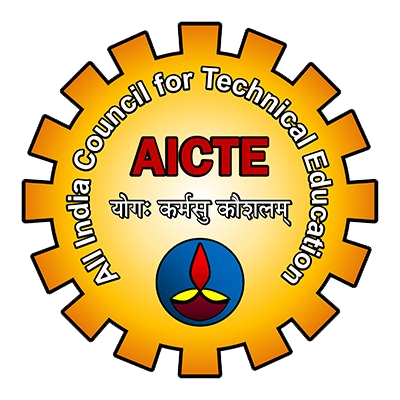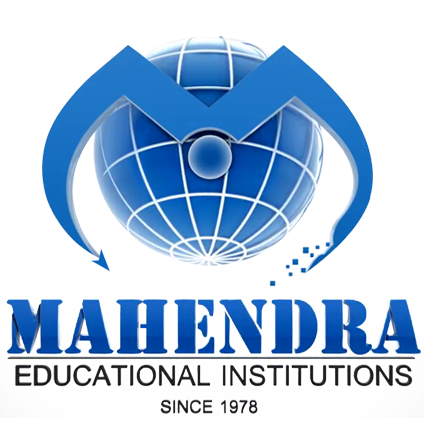Best Practices
1 - Flipped Learning
Objectives of the Practice:
The main objective of this method is that the educator guides students as they apply the concepts and engage creatively in the subject matter.
Context:
The traditional learning models incorporate "direct instruction," which refers to an explicit, instructor-directed approach to teaching where lessons are scripted and structured. In this model, the instructor presents content in the form of lectures, and the student is a passive learner. Recently, flipped learning has been introduced as an alternative, and its popularity has grown. Flipped learning is a pedagogical approach in which direct instruction moves from the group learning space to the individual learning space, and the resulting group space is transformed into a dynamic, interactive learning environment where the educator guides students as they apply concepts and engage creatively in the subject matter.
Practice:
All the faculty members are advised to plan one topic in each unit per subject and for the maximum number of students to participate in this method to improve the students' learning abilities.

Evidence of Success:
Students will perform well in the examinations as well as in the interviews for placement, which will help them apply the concepts in mini and major projects.

Problems encountered and resources required:
The main issues with this method are faculty training and the time-consuming process.
Outcome:
Very good understandings of engineering concepts will be helpful to students in getting better marks in the examinations. It also enhances teacher and student interaction and provides better opportunities for experiential learning.
2 - Ecological Farming from Biodegradable Waste
Objectives of the Practice:
Converting Biodegradable Waste into Organic Manure Composting the waste creates a product that can be used to improve soil nutrients and help promote crop yield organically.
Context:
Our campus has lots of flora and fauna creatures which produce high quality biomass and it is used for preparation of nutrient rich compost. The waste materials such as paper, twigs, leaves, flowers, plants, and garden waste are collected from all over our campus. These wastes are converted into compost by burying in the pit dug out near the farm land. The wastes are converted into manure with the help of microorganisms under aerobic digestion process. Figure 1 shows the composting yard.

Figure 1 composting yard
Practice:
Every day the sanitary workers, sweepers, student volunteers, NCC representatives and staff volunteers are engaged to collect the biomass materials in their workspace area and collectively dump into the pit. After dumping the biomass into the pit, it was watered to make convenient for digestion process. Once the pit is completely filled, it is allowed for complete degradation to compost stage. Then, the subsequent pits are operated as per sequential order. These activities help to keep our campus clean and green.
Evidence of Success:
The manure is applied to cropping fields, shade
net cultivation and ornamental flower pots to avoid the chemical
fertilizer utilization. The crops grown under this manure are
completely organic and nutrient enriched vegetables, which are
good for health. These organic vegetables are utilized for
cooking in both the Hostels (Boys and Girls) and conduct food
carnival in our College.
Figure 2 shows the bhendi field
cultivation using organic manure.

Figure 2 Bhendi field - cultivation using organic manure
Problems encountered and resources required:
Categorizing the biomass or wastes based on the degradable time is the major issue. But it can be solved by utilizing separate containers for collection and transfer of waste materials.
Outcome:
Organic manure has multiple benefits due to the balanced supply of nutrients, including micronutrients, increased soil nutrient availability due to increased soil microbial activity, the decomposition of harmful elements, soil structure improvements and root development, and increased soil water availability.
3 - Blended Learning
Objectives of the Practice:
The object of this blended learning is to combine digital learning tools with more traditional face-to-face classroom teaching.
Context:
- Blended learning is the term for
combining digital learning tools with more traditional
face-to-face classroom teaching. In this environment, both
the student and the teacher should be physically located in
the same space. In spite of this, the digital tools used
should be able to be utilized by the students.
- The experiment on “Field operation
of plant protection equipment (Sprayer)” is conducted
by the students in “Blended mode”. The faculty
member provided an overview of the experiment and shared
relevant video(s). The students watched the video at home,
as given in the following URL and learnt online about the
basics and virtual conduct of the experiment.
- Main Video Source URL :
https://www.youtube.com/watch?v=dAYx-onHZBA
(Duration 04.41 minutes) -

Schematic Diagram of Power Sprayer
- Afterwards students visited the laboratory conducted real experiment in the laboratory with hands on practice as shown in the picture. Blended Learning facilitated the students to learn about basics of experiments from online. Students used to watch the videos and understand virtual experimentation.
-

Online mode Video watched by students
- In order to clarify their doubts of concepts and to experiment, they visited the laboratory and performed the real experiment with hands on experience. With the theoretical inputs and prior understanding about the scope of experiment from online, the students as and when visit the laboratory can readily start experimentation without waiting for further instruction by the faculty members. This saved the timing and students shall complete more number of experiments per laboratory session. The online understanding of concepts (virtual experimentation) is blended with offline real experimentation in laboratory to get complete know-how. So this is an example for “Blended Mode of Learning” by our students.
Practice:
The teacher's role shifts from knowledge provider to coach and mentor. Traditionally, classroom instruction has largely been teacher-directed, top-down, and one-size-fits-all, with a bit of differentiation thrown in, but with blended learning, it now becomes more student-driven, bottom-up, and customized, with differentiation as a main feature. Much of this new learning dynamic is due to the improved role of technology in instruction.

Evidence of Success:
Students will perform well in the examinations as well as in the interviews for placement, which will help them apply the concepts in mini and major projects.

Problems encountered and resources required:
The main issues with this method are faculty training and the time-consuming process.
Outcome:
- Increased student engagement in learning.
- Improved teacher and student interaction.
- Time management and flexibility
- Improved student learning outcomes
- More flexible teaching and learning environment
- More opportunities for self and continuous learning
4 - COIR Pith for Mulching and Soil-less Culture
Objectives of the Practice:
Utilization of coir pith for soil-less culture and moisture retention in soil. Separating the coir from coconut husk, which is used as mulching to improve soil moisture and utilize for hydroponic cultivation.
Context:
The coconut husk collected from coconut farm and hostels are taken into Agricultural Engineering Laboratory to extract coir pith and fiber. The raw coconut husk is used as a mulch material in horticultural crops. Coconut coir pith looks like peat, coconut fibers are stringy and coconut coir chips contain both. In our gardening, it is used in hanging baskets, growing seedlings, and polyhouse hydroponic cultivation. Coconut husk fiber retains water and keeps the plants well hydrated. It breaks down slowly, adding nutrients right back into the soil. It is, therefore, more eco-friendly than other types of mulch that might contain chemicals or harmful plastics. Figure 1 Coir pith vegetable pots. Figure 1 shows coir pith vegetable pots.

Figure 1 Coir pith vegetable pots.
Practice:
The husk collected from the coconut farm and hostels are readily taken into Agricultural Engineering Laboratory. By retting and beating, the husks are softened and can be decorticated, on this way the fibers are extracted. Different categories of coir piths are extracted and made them as a block for utilization in next season. After hackling, washing and drying (in the shade) the fibres are loosened manually and cleaned. In our bhendi and coconut farm the coir mulching is applied and benefitted for soil and moisture conservation. The coconut husk mulch is a simply protective layer of material that is spread on top of the soil to protect soil moisture and degrade over the period of time and mix well with the soil.
Evidence of Success:
The mulch applied to cropping fields, shade net cultivation and ornamental flower pots to retain the moisture and reduces irrigation water requirement. The crops grown under this mulching method are evergreen and healthy, also yields better. The effective water management and irrigation scheduling are achieved with the help of mulching. Figure 2 Hydroponics using Coir pith.

Figure 2 Hydroponics using Coir pith
Problems encountered and resources required:
The extraction process of coir from the husk is laborious. But it can be solved by installing coir pith extraction unit in Agricultural Engineering Laboratory.
Outcome:
Coir mulch helps to maintain moderate moisture levels in the field. It also moderates soil temperature and helps for nitrogen fixation in soil. Like any good mulch material, coir helps control weeds, and it lasts up to three years.


